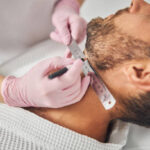Braces are a common dental treatment used to straighten teeth and fix problems related to bite and jaw alignment. Many people choose braces not only for cosmetic reasons but also to improve their oral health. This article provides a complete explanation of what braces are, how Braces work, the types available, and what to expect during and after the treatment.
What Are Braces
Braces are orthodontic devices that help align and straighten teeth over time. They apply continuous pressure to the teeth and jaws to move them into a better position. Braces are usually recommended by dentists or orthodontists when teeth are crooked, crowded, or spaced too far apart. They also help correct overbite, underbite, and other bite issues.
Why People Need Braces
There are many reasons why someone might need braces. Some of the most common reasons include:
-
Crooked or misaligned teeth
-
Gaps between teeth
-
Overlapping teeth
-
Bite problems such as overbite, underbite, or crossbite
-
Jaw alignment issues
Braces can help improve appearance, speech, and chewing function. They also reduce the risk of cavities and gum disease by making teeth easier to clean.
How Braces Work
Braces work by applying gentle, continuous pressure to the teeth. This pressure slowly moves the teeth into the correct position over time. Braces consist of different parts such as brackets, wires, and elastic bands. The brackets are attached to each tooth and connected by a wire. The orthodontist adjusts the wire during regular visits to keep the teeth moving in the right direction.
Types of Braces
There are several types of braces available today. The choice depends on the patient’s needs, comfort, and budget.
Metal Braces
These are the traditional and most common type of braces. They are made of stainless steel and are very effective in correcting dental issues. Modern metal braces are smaller and more comfortable than those used in the past.
Ceramic Braces
Ceramic braces are similar to metal braces but the brackets are made of tooth-colored material. This makes them less noticeable. They are a popular option for people who want a more discreet appearance.
Lingual Braces
Lingual braces are attached to the back of the teeth, making them invisible from the front. They work like regular braces but can be more difficult to clean and adjust. Not everyone is a good candidate for lingual braces.
Clear Aligners
Clear aligners are removable plastic trays that gradually move the teeth into position. They are nearly invisible and can be taken off while eating or brushing. They are usually suitable for mild to moderate alignment issues.
Duration of Treatment
The length of time someone needs to wear braces depends on the severity of the problem. Most people wear braces for one to three years. After the braces are removed, retainers are usually given to keep the teeth in their new position. Regular check-ups are important during the treatment to monitor progress and make adjustments.
Caring for Braces
Good dental hygiene is important while wearing braces. Food can get stuck in the brackets and wires, increasing the risk of cavities and gum problems. Brushing after every meal, flossing daily, and using a mouthwash can help keep the mouth clean. Avoid hard, sticky, and chewy foods that can damage the braces. Visiting the orthodontist for regular check-ups ensures that the treatment stays on track.
Common Issues During Braces Treatment
While braces are safe and effective, some people may face a few challenges during treatment. These include:
-
Mild pain or discomfort after adjustments
-
Sores or irritation in the mouth
-
Broken brackets or wires
-
Difficulty in eating certain foods
These issues are usually temporary and can be managed with care and proper guidance from the orthodontist.
Benefits of Braces
Braces offer many benefits beyond just improving the smile. Some of the main benefits include:
-
Proper alignment of teeth and jaws
-
Better chewing and speech
-
Easier cleaning of teeth and gums
-
Reduced risk of dental problems
-
Increased self-confidence
After Braces Treatment
Once the braces are removed, it’s important to maintain the results. Retainers are often used to keep the teeth in their new position. Wearing the retainer as instructed is necessary to prevent the teeth from shifting back. Continue practicing good oral hygiene and visit the dentist regularly.
Choosing the Right Option
Before getting braces, a consultation with a dentist or orthodontist is required. They will examine the teeth, take X-rays, and make a treatment plan. The type of braces recommended depends on age, dental condition, and personal preferences. It’s important to ask questions and understand all available options before starting the treatment.
Braces for Children and Adults
Braces are suitable for people of all ages. Children usually get braces between the ages of 10 to 14 when most of their permanent teeth have come in. Adults can also get braces if they want to correct their teeth. Modern options such as clear aligners and ceramic braces make adult orthodontics more convenient and less noticeable.
Cost of Braces
The cost of braces varies depending on the type of braces used and the length of the treatment. Metal braces are usually the most affordable, while clear aligners and lingual braces can be more expensive. It’s important to discuss the full cost and payment plans with the clinic before starting.
Conclusion
Braces are an effective solution for improving the alignment of teeth and achieving a healthy, confident smile. Whether metal, ceramic, or clear aligners, each type has its own advantages. With proper care and professional guidance, the treatment can lead to long-term benefits for oral health and appearance. For expert consultation and braces treatment, you can visit hash clinics.




